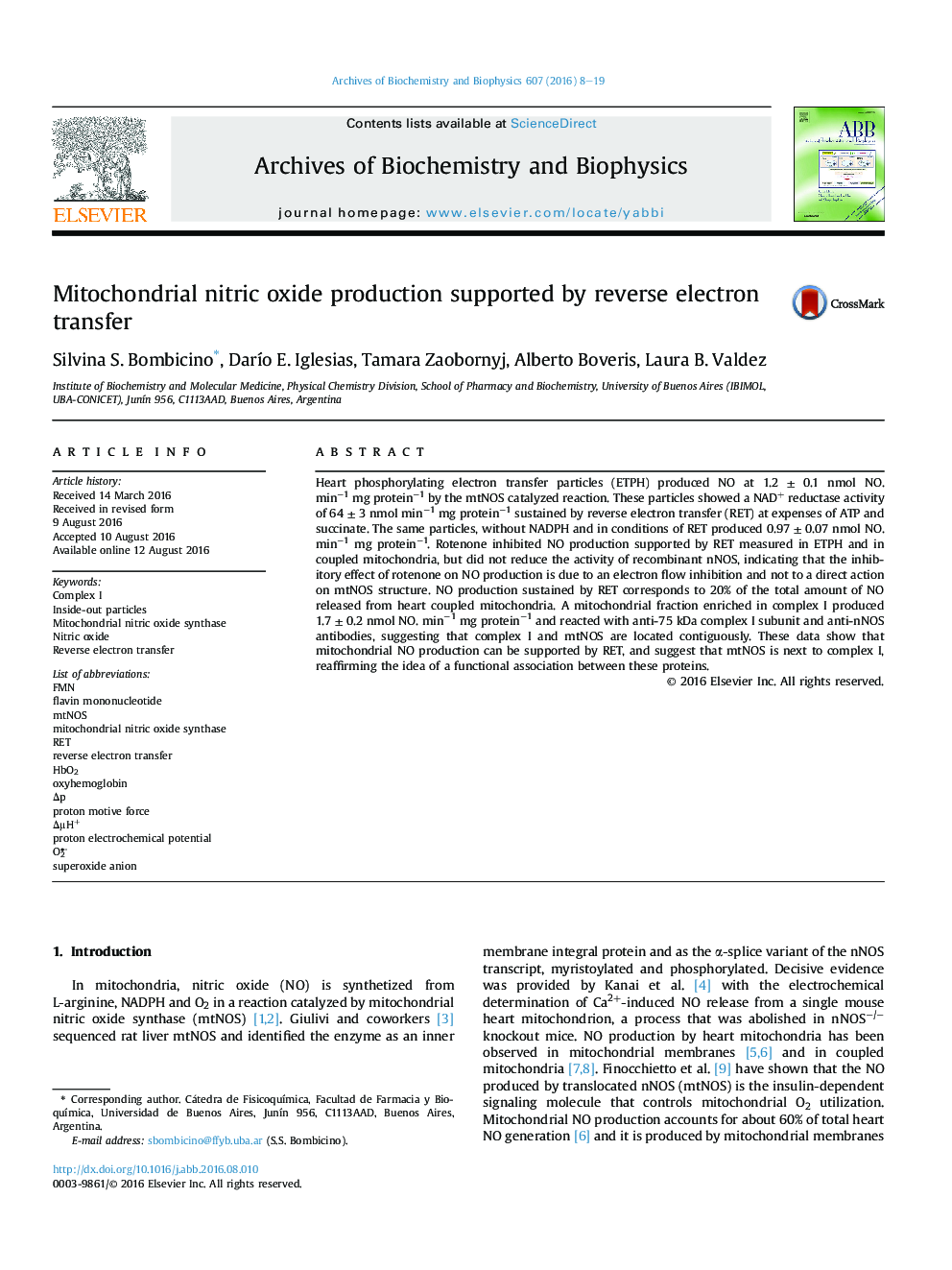| Article ID | Journal | Published Year | Pages | File Type |
|---|---|---|---|---|
| 1924683 | Archives of Biochemistry and Biophysics | 2016 | 12 Pages |
•Inside-out particles produce NO supported by reverse electron flow.•Complex I enriched fraction produce NO and is recognized by anti-nNOS antibodies.•Mitochondrial NOS (mtNOS) functionally interacts with complex I proteins.•mtNOS could use electrons derived from the respiratory chain for its activity.
Heart phosphorylating electron transfer particles (ETPH) produced NO at 1.2 ± 0.1 nmol NO. min−1 mg protein−1 by the mtNOS catalyzed reaction. These particles showed a NAD+ reductase activity of 64 ± 3 nmol min−1 mg protein−1 sustained by reverse electron transfer (RET) at expenses of ATP and succinate. The same particles, without NADPH and in conditions of RET produced 0.97 ± 0.07 nmol NO. min−1 mg protein−1. Rotenone inhibited NO production supported by RET measured in ETPH and in coupled mitochondria, but did not reduce the activity of recombinant nNOS, indicating that the inhibitory effect of rotenone on NO production is due to an electron flow inhibition and not to a direct action on mtNOS structure. NO production sustained by RET corresponds to 20% of the total amount of NO released from heart coupled mitochondria. A mitochondrial fraction enriched in complex I produced 1.7 ± 0.2 nmol NO. min−1 mg protein−1 and reacted with anti-75 kDa complex I subunit and anti-nNOS antibodies, suggesting that complex I and mtNOS are located contiguously. These data show that mitochondrial NO production can be supported by RET, and suggest that mtNOS is next to complex I, reaffirming the idea of a functional association between these proteins.
Graphical abstractFigure optionsDownload full-size imageDownload high-quality image (193 K)Download as PowerPoint slide
